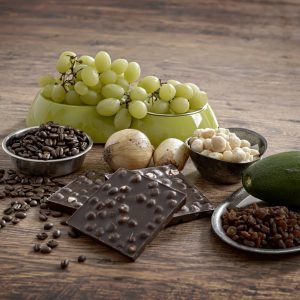Combine this with a vast array of cat food on the market and it’s easy to find yourself wondering what to buy. There are premium brands, big name products and supermarket own brand foods, wet (in a variety of formats) and dry complete foods, and complementary or treat foods.
Where to Begin?
Your start point with a new kitten or cat, is to find out what they have been used to eating and continue feeding this until you feel they are ready to move onto a new food. It is important to make the changeover a gradual one so that swapping from one food to another is not a shock to the digestive system.
Cats thrive on high-protein diets rich in ingredients only found in meat (such as the amino acid taurine, which is essential for their wellbeing). They can tolerate carbohydrates in small amounts and do not need vegetables. At each meal your cat should have a complete food (one that is nutritionally balanced), be it wet or dry. It should be nourishing, and your cat should enjoy it. Complementary foods are exactly that – designed as an extra, not intended as your cat’s entire diet.
Should you feed wet or dry, or a mixture of both?
Just as cats can be picky about what they eat, they are often choosy about what and where they will drink. As a consequence, many don’t drink sufficient liquid to be properly hydrated. Tinned or pouch food is beneficial because it will help to increase the amount of water they consume. This is important as good hydration helps to reduce the likelihood of health problems with the kidneys and urinary tract. Plus, with a tempting aroma, wet food can be helpful in tempting really fickle cats to eat. You might just have to discover which texture he prefers through a process of trial and error, and then stick with it!
An obvious benefit of dry cat food is that all of your cat’s meals can be catered for from one packet. Cats naturally prefer to eat and come again, grazing through the day, so dry food has the advantage over wet food in that it won’t spoil in a bowl if left down through the day. And, kibble in a good quality dry food will have a mild abrasive surface so crunching them will help control tartar levels on your cat’s teeth.
The ideal option is to feed your cat with a mixture of wet and dry food, thus providing the benefits of both. For example, a dry food could be put down at breakfast time and be available for them to return to throughout the day. At dinnertime, a bowl of wet food will provide a tasty variety. Mixed feeding has been found to help prevent cats becoming too fickle about what they eat – but don’t be tempted to mix dry and wet foods together in the same bowl though. Take up uneaten food to prevent it from spoiling and deteriorating.
Variety in flavours of the same food brand or formulation is fine, but it’s not necessary or a good idea to frequently introduce new varieties. Again, this will likely result in your cat becoming temperamental about what they eat. And if you make changes to your cat’s feeding regime, for whatever reason, do it gradually, over at least a week, to avoid stomach upsets.
In terms of how much food you place in the bowl, know your cat’s weight and follow the manufacturer’s guidelines on the packaging. As these are intended as a general guide, it’s up to you to adjust the amount you feed, depending on your cat’s age, level of activity, and appetite. Keep an eye on their body shape and if they starts to put on weight as an adult, reduce portions gradually. Your vet will be able to advise if you are concerned about your pet’s weight gain.

Is raw a good option?
There is some controversy around raw food diets for cats and dogs. It has gained a following in recent years as advocates believe it is a more natural feeding regime and offers health benefits. However, pet nutritionists have concerns about its safety in terms of potential contaminants in meat, and creating a home-made diet that fully satisfies nutritional needs of a cat is challenging as it requires a good deal of nutritional knowledge.
For those who would prefer to opt for less processed food options for their pets, a number of manufacturers have produced packaged uncooked meats for sale in pet shops and online. Be guided by your cat’s preferences and welfare and if you find yourself struggling in terms of what to feed, then a vet or a vet nurse at your usual veterinary practice will be able to offer pointers for your individual cat. And certainly, if your cat has difficulty eating, then a veterinary check-up is essential.
Always have fresh water available
Always have fresh water available for your pet, whether you feed wet or dry food. Cats prefer to drink from wide shallow bowls and like to drink in separate locations from their food, so behaviourists suggest avoiding double bowls. Many enjoy drinking from moving water as they see this as being ‘fresher’ than standing water in a bowl. Pet fountains are available to buy and can be a great way to encourage your cat to drink.











